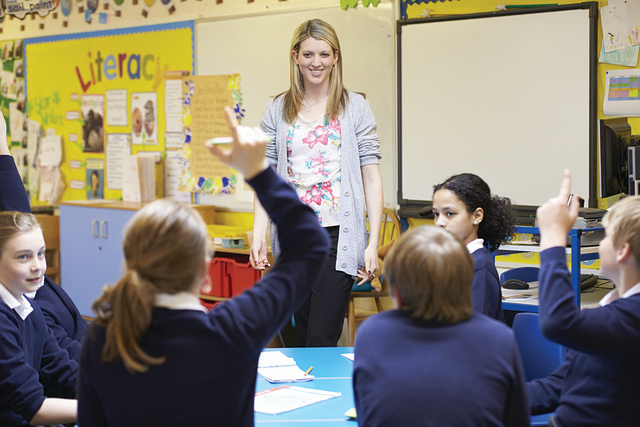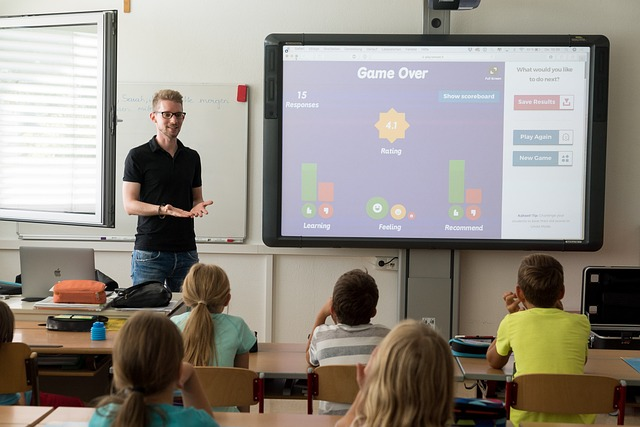Cover teaching can be quite stressful. You’re going to a new school almost every day. The routines are different, the children are different and the rules are different. It might seem like every time you finally get your head wrapped around that particular school, you just have to start right over again. Here are some suggestions and tips to cover secondary supply teachers that I learned from my time in supply cover teaching for 6 months:
When you first arrive…

Arrive Early: Understanding School and Classroom Dynamics
Arriving early at a new school is more than just a punctuality best practice; it’s a strategic move for cover teachers. This extra time allows cover supervisor for you to:
– Orient Yourself: Familiarize yourself with the layout of the school, locate essential areas such as the staff room, restrooms, and emergency exits.
– Preparation: Review the lesson plans and materials provided. This helps supply teacher in understanding what is expected during the day and how to effectively use the resources at hand.
– Reduce Anxiety: Being early reduces the rush and anxiety that can come from navigating a new environment, allowing you to start a better work life balance throughout the day more calmly and confidently.
Ask Questions: Learning School Routines and Procedures
Asking questions is crucial in understanding the unique environment of each school. It’s important to:
– Understand the School’s Culture: Each school has its own culture and way of doing things. Understanding this can help you blend in more seamlessly.
– Know the Rules: Inquire about the school and primary school teacher’s specific rules and disciplinary procedures. This helps in managing classroom behavior effectively.
– Identify Key Personnel: Learn who to approach for different needs – whether it’s administrative support, student welfare, or technical help.
– Student Dynamics: If possible, get a brief on the class or classes you will be teaching. Knowing any specific needs or challenges can help in better preparation.
Read the School’s Behaviour Policy: Familiarizing with Expectations
Every school has a set of policies and expectations regarding student behavior, and it’s essential for cover teachers to be aware of these:
– Consistency in Discipline: Understanding the school’s behavior policy helps in maintaining consistency with the students’ regular experience.
– Effective Response Strategies: Familiarize yourself with the school’s approach to handling disruptions, conflicts, and other classroom challenges.
– Special Needs Awareness: Some primary schools and secondary schools’ policies include guidelines for working with students with special educational needs, providing insights into accommodations or adjustments that might be necessary.
– Building Trust: By adhering to the school’s established policies, you can quickly gain the trust of both students and supply teachers and staff, as it shows your commitment to maintaining a familiar and stable learning environment for the students.
Incorporating these strategies when you first arrive at a new school can set a positive tone for the day and contribute to a more successful and less stressful teaching experience.
Preparing for the lesson…

Don’t Be Afraid to Ask for Help: Seeking Necessary Assistance
As a cover teacher, it’s important to recognize that seeking help is a sign of professionalism, not incompetence. Here are ways to effectively seek assistance:
- Locate Resources: Ask where to find materials, documents, or equipment you might need for the lesson.
- Clarify Lesson Plans: If lesson plans are unclear or incomplete, don’t hesitate to ask for clarification from fellow teachers or administrative staff.
- Emergency Procedures: Make sure you know what to do in case of an emergency, including lockdowns or fire drills.
Chat with Staff: Understanding Class Dynamics
Interacting with regular staff can provide valuable insights:
- Class Behavior: Learn about the general behavior of the class and any unique challenges they might present.
- Student Needs: Inquire about students with special needs or those who may require additional attention.
- Teaching Tips: Experienced teachers can offer practical tips or strategies that work well with the students you’ll be teaching.
Look Over Materials and Class List: Effective Preparation
Being well-prepared is key to a successful lesson:
- Familiarize with Content: Review the lesson materials thoroughly to ensure you understand the topics being covered.
- Know Your Students: Go through the class list to familiarize yourself with student names, which can help in building rapport and managing the class more effectively.
Write Instructions on the Board: Clarifying Lesson Objectives
Writing instructions on the board has several benefits:
- Clear Guidelines: It provides students with clear and accessible guidelines on what is expected during the lesson.
- Reduces Confusion: This visual reminder can help reduce repetitive questions and confusion about the task at hand.
Set Clear Expectations: Establishing Classroom Rules
Setting clear expectations at the start of the lesson per day can greatly enhance classroom management:
- Outline Expectations: Clearly state what behavior is expected from the students during the lesson.
- Consequences and Rewards: Explain the consequences for misbehavior and, if applicable, rewards for good behavior.
Prepare with Videos: Enhancing Teaching Techniques
Online resources can be a valuable tool in lesson preparation:
- Teaching Methodologies: Watch videos on effective teaching strategies that you can incorporate into your lesson.
- Classroom Management: Look for videos on managing diverse classrooms and dealing with common behavioral issues.
- Subject-Specific Resources: Use educational videos as supplementary material to enhance student understanding and engagement with the lesson.
Preparing effectively for your lesson not only makes your teaching more effective but also instills confidence in your students, creating a more conducive learning environment.
During the lesson…

Use Support Staff: Tapping into Their Expertise
Support staff, such as teaching and qualified teacher assistants or aides, can be invaluable allies in the classroom:
- Understanding Student Dynamics: They often have a deeper understanding of individual student needs and classroom dynamics.
- Routine Assistance: They can assist in maintaining the usual classroom routines, which helps in minimizing disruptions.
- Behavior Management: Rely on their insights for managing specific behavioral issues or challenges.
Be Friendly but Professional with Students: Balancing Engagement and Control
Creating a positive classroom atmosphere involves both friendliness and professionalism:
- Build Rapport: Show genuine interest in students’ thoughts and opinions, which helps in building rapport.
- Maintain Boundaries: While being approachable, it’s crucial to maintain clear boundaries and uphold the standards of the classroom.
- Addressing Questions: Encourage questions and curiosity, but steer conversations to stay relevant to the lesson.
Stay on Task and Leave a Record: Monitoring and Documenting
Effective documentation is a key aspect of classroom management:
- Track Progress: Keep notes on how far you’ve progressed in the lesson plan and any topics that need further clarification.
- Record Incidents: Document any behavioral issues or notable incidents that occur during the lesson.
- Feedback for Regular Teacher: Leave detailed notes for the regular teacher about the day’s progress, challenges, and any other pertinent observations.
Be Strong Early On: Establishing Classroom Authority
Setting the tone from the start is essential:
- Assert Authority: Begin the class with a clear assertion of your role and the rules to be followed.
- Consistent Enforcement: Consistently enforce rules and consequences as needed to maintain order.
- Confidence is Key: Display confidence in your teaching and classroom management to establish a sense of authority and stability.
Incorporating these strategies during the lesson not only aids in effective teaching but also ensures a well-managed classroom environment conducive to learning. Balancing friendliness with professionalism, leveraging support staff, staying focused on the task at hand, and establishing your authority as secondary teacher early on are crucial for a smooth and successful secondary school teaching experience.
At the end of the day…
Always Leave a Note: Providing Comprehensive Feedback
Leaving a short term detailed note for the regular primary teacher is a critical step in ensuring continuity and communication:
- Summarize the Day: Provide an overview of what was covered, including any topics or activities that were completed.
- Student Behavior and Engagement: Note any significant behavioral issues or exceptional student participation.
- Incomplete Work: Highlight any assignments or activities that were not completed, so the regular teacher can follow up.
- Suggestions for Follow-Up: Offer any recommendations or observations that might help the regular teacher in subsequent lessons.
Tidy the Room: Ensuring an Organized Classroom
Leaving the classroom clean and organized is a sign of respect and professionalism:
- Restore Order: Make sure desks and chairs are in place, and all teaching materials are returned to their proper locations.
- Check for Left Items: Look for any student belongings that might have been left behind and place them in a designated lost and found area.
- Clean Surfaces: If possible, wipe down tables, desks, and any used equipment to maintain cleanliness.
Incentivize Students: Encouraging Positive Behavior
Using creative methods to motivate students can make the end-of-day routine smoother and more enjoyable:
- Engaging Activities: Introduce fun activities like Mad Libs as a reward for good behavior or completed work. This can be a great way to wind down and transition students out of the learning mode.
- Positive Reinforcement: Acknowledge students who have been particularly helpful or well-behaved during the day. This recognition can motivate others to exhibit similar behavior.
- Preview of Tomorrow: If you will be returning, give students a brief and exciting preview of what to expect the next day, building anticipation and readiness.
By effectively wrapping up the day as class teacher with these steps, you not only assist the regular teacher but also leave a positive impression on the students, setting the stage for a more productive and harmonious classroom environment.
Additional Strategies

Bring Time-Fillers: Preparedness for Unexpected Gaps
Having a repertoire of quick, engaging activities can be a lifesaver in various situations:
- Engagement in Spare Moments: Use short, interactive games or puzzles to fill unexpected downtime and keep students engaged.
- Educational and Fun: Choose activities that are not only enjoyable but also reinforce learning in a subtle way.
Create a Mobile Desk: Being Self-Sufficient
A well-stocked mobile desk ensures you’re prepared for any teaching scenario:
- Essential Supplies: Carry basic supplies like pens, markers, sticky notes, and extra paper. This reduces reliance on finding materials in a new classroom.
- Quick Accessibility: Having your own resources at hand saves time and keeps you organized throughout the day.
Be Honest and Flexible: Adapting to Classroom Needs
Flexibility and honesty are key traits of an effective cover teacher:
- Adapt to the Situation: Be ready to modify your teaching approach based on the class’s response and needs.
- Transparency: If you’re unsure about a topic, it’s better to be honest and seek help rather than provide incorrect information.
Use Collaborative Art and Games: Encouraging Teamwork
Incorporating group activities can enhance the learning experience:
- Foster Teamwork: Activities like collaborative art projects or team-based games encourage students to work together, building teamwork skills.
- Maintain Interest: These activities can break the monotony of traditional learning and keep students actively engaged.
Document Feedback Thoroughly: Ensuring Effective Communication
Detailed feedback is essential for seamless continuity between cover teachers and regular primary teachers are:
- Comprehensive Notes: Document what was covered, student responses, and any specific incidents that need attention.
- Suggestions and Observations: Offer constructive feedback or suggestions based on your experience with the class.
Build Relationships with Students: Enhancing Classroom Dynamics
Personal connections with students can greatly improve the teaching experience:
- Remember Names and Interests: Showing interest in students’ lives and remembering details can help in building rapport.
- Positive Interaction: Engage in conversations and show genuine interest in their thoughts, which can lead to a more respectful and responsive classroom environment.
By implementing these additional strategies, cover teachers can not only manage the day-to-day challenges of their role more effectively but also create a positive and impactful learning environment for their students.
Final Thoughts
Cover teaching, while challenging, presents a unique opportunity to make a significant impact in diverse classroom settings. Every day of cover lessons brings new experiences and the chance to touch the lives of various students.
As a cover teacher, you play a vital role in the educational journey of countless students and schools. Your flexibility, creativity, and commitment to providing quality education, regardless of the circumstances, are invaluable assets to any school community. Keep in mind that every day is an opportunity to inspire and be inspired, to learn, and to contribute to the ever-evolving world of the education industry.


